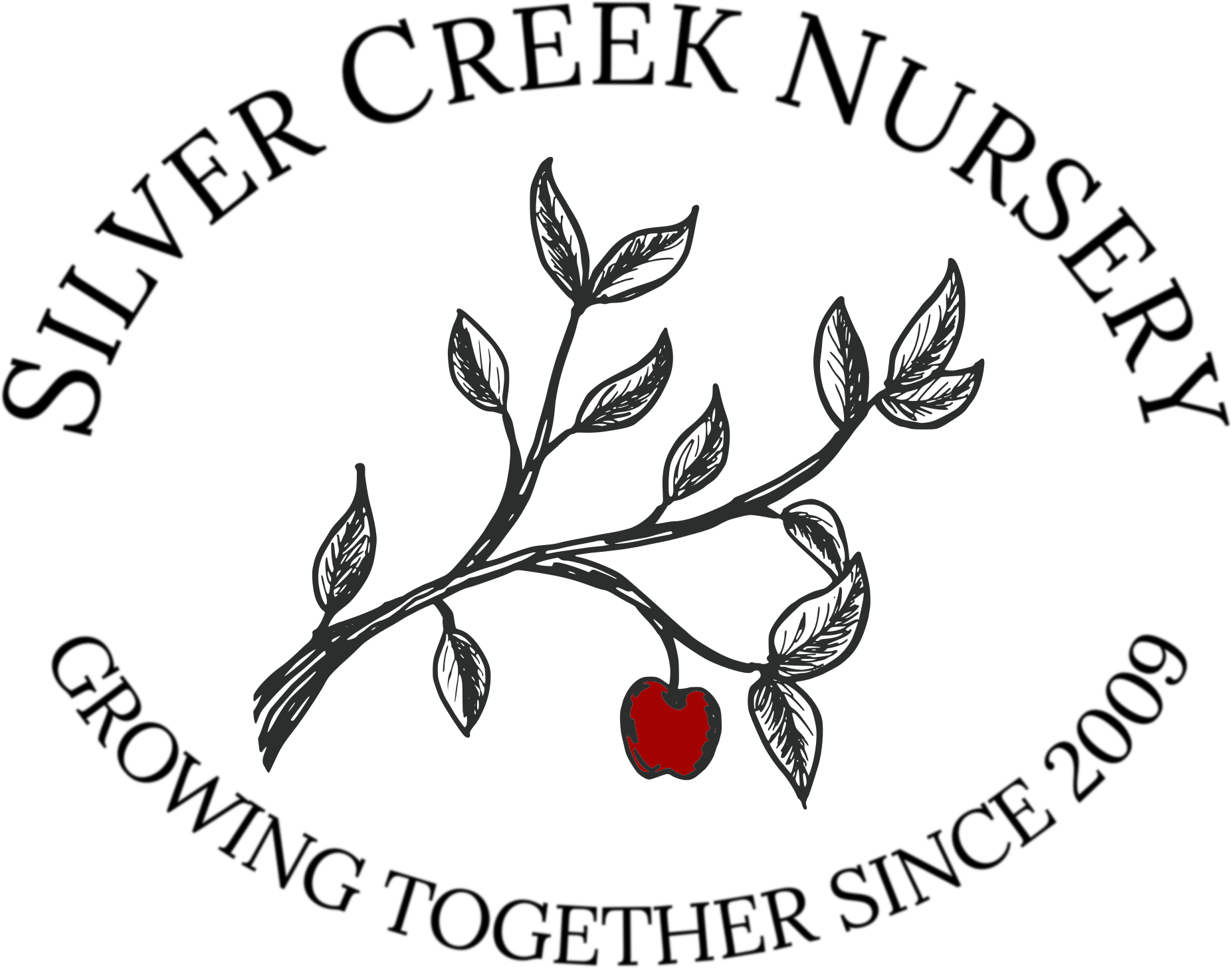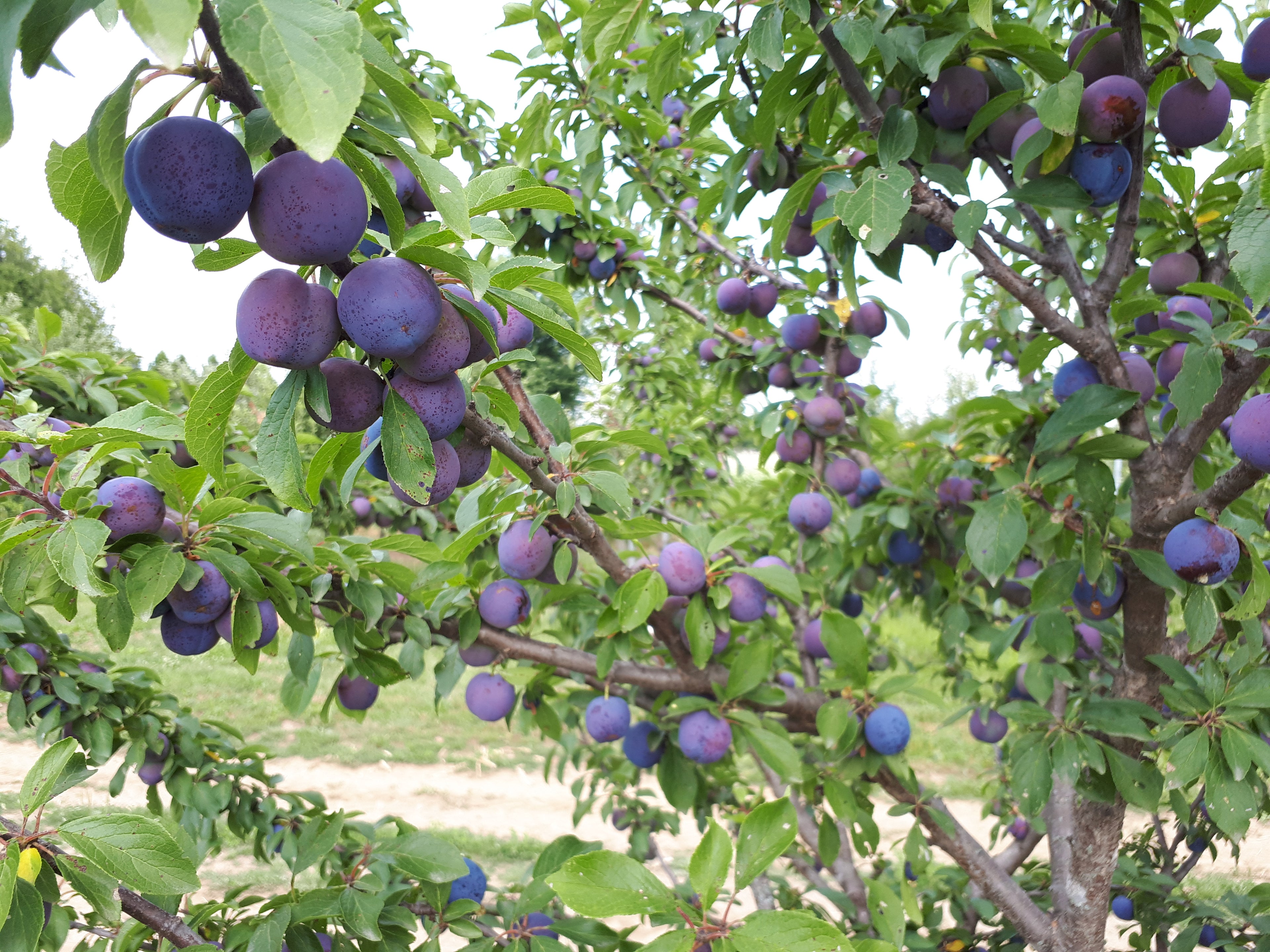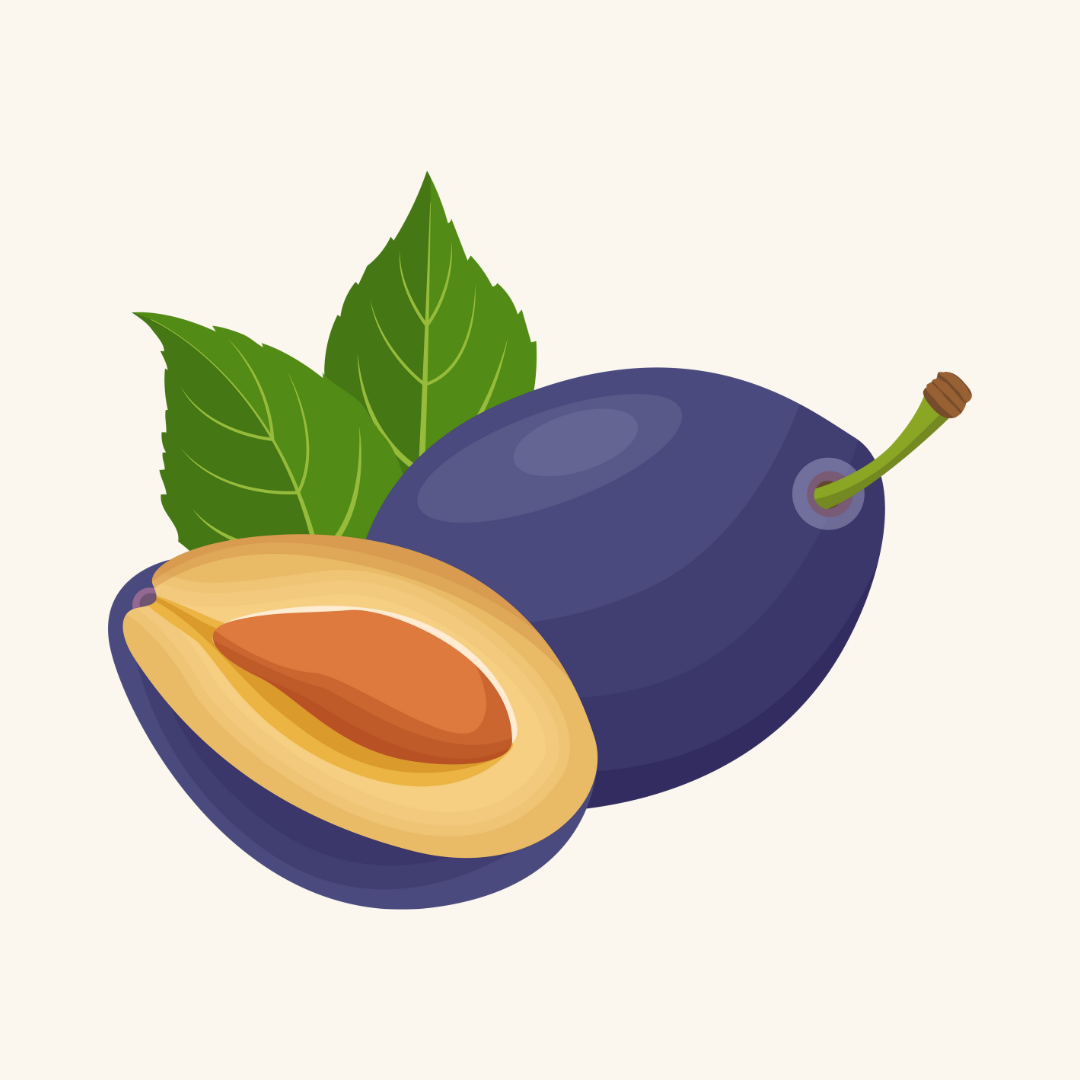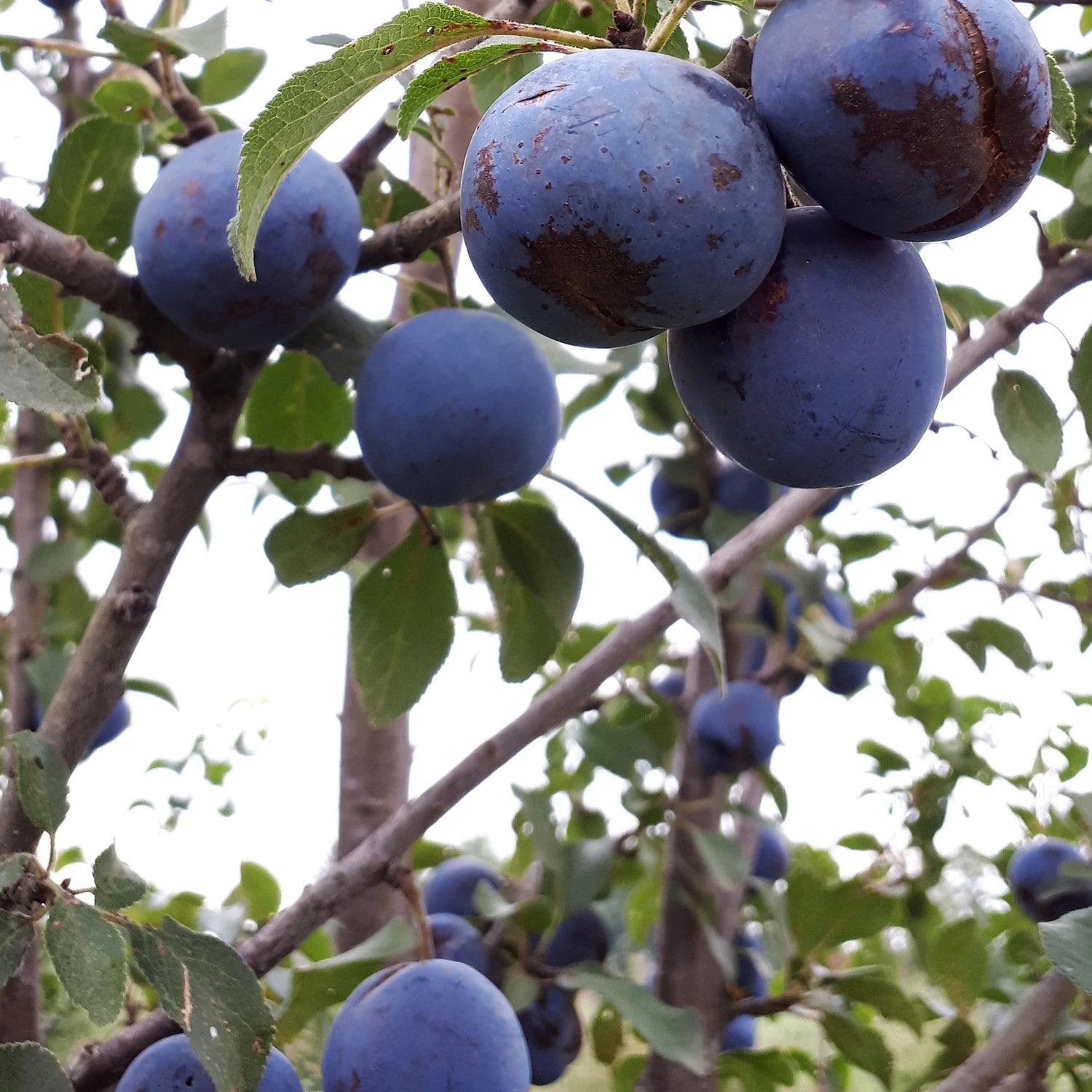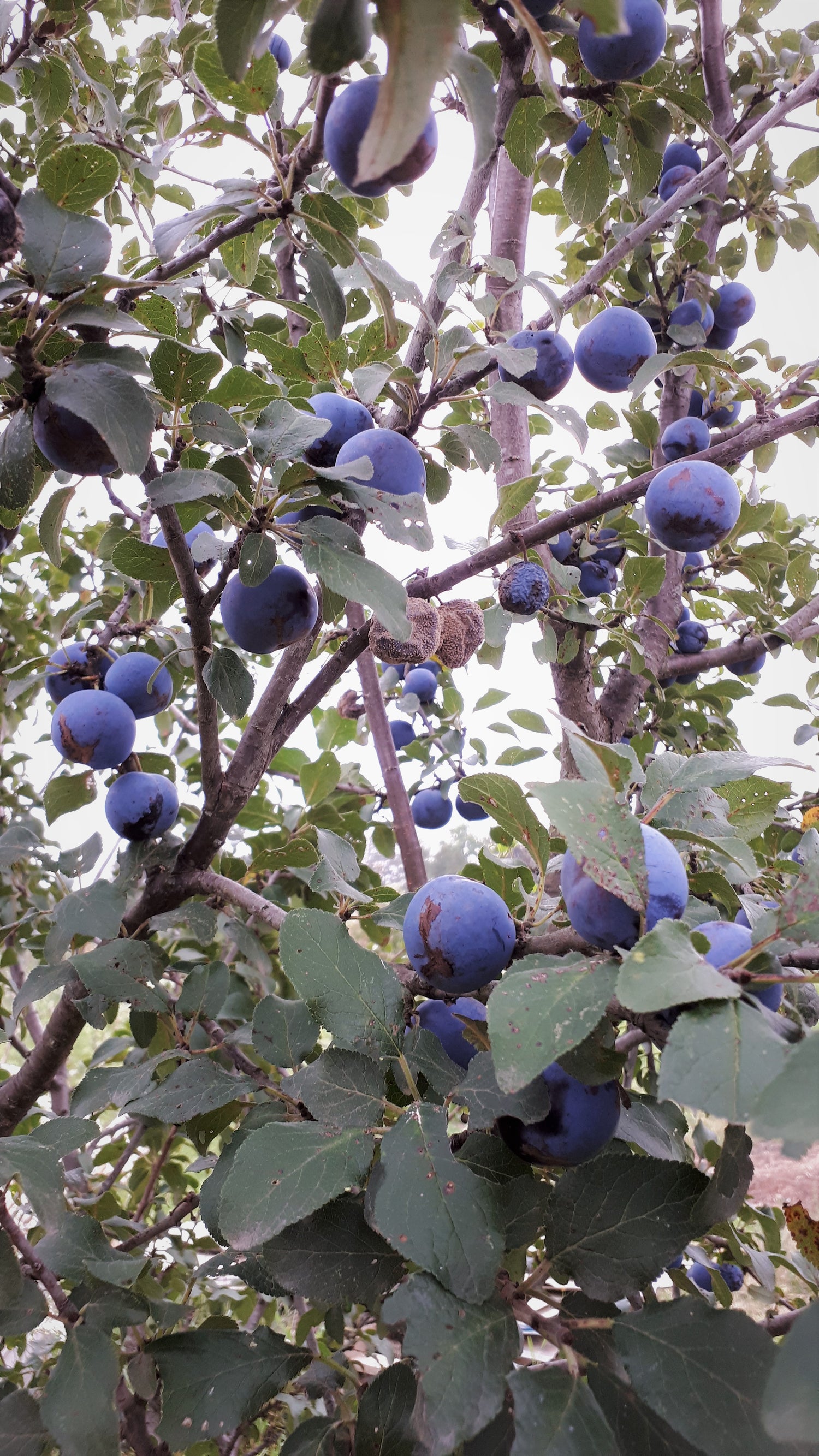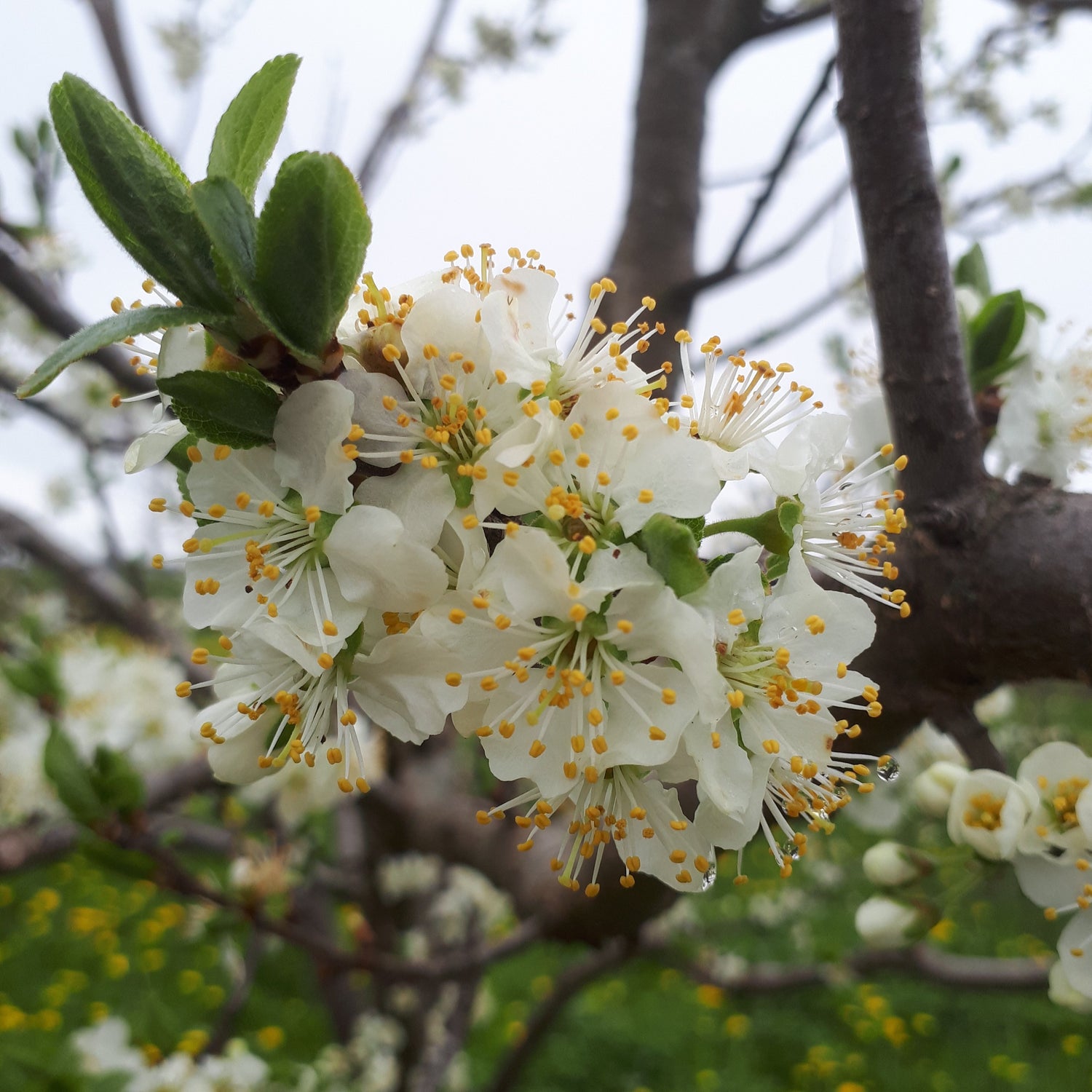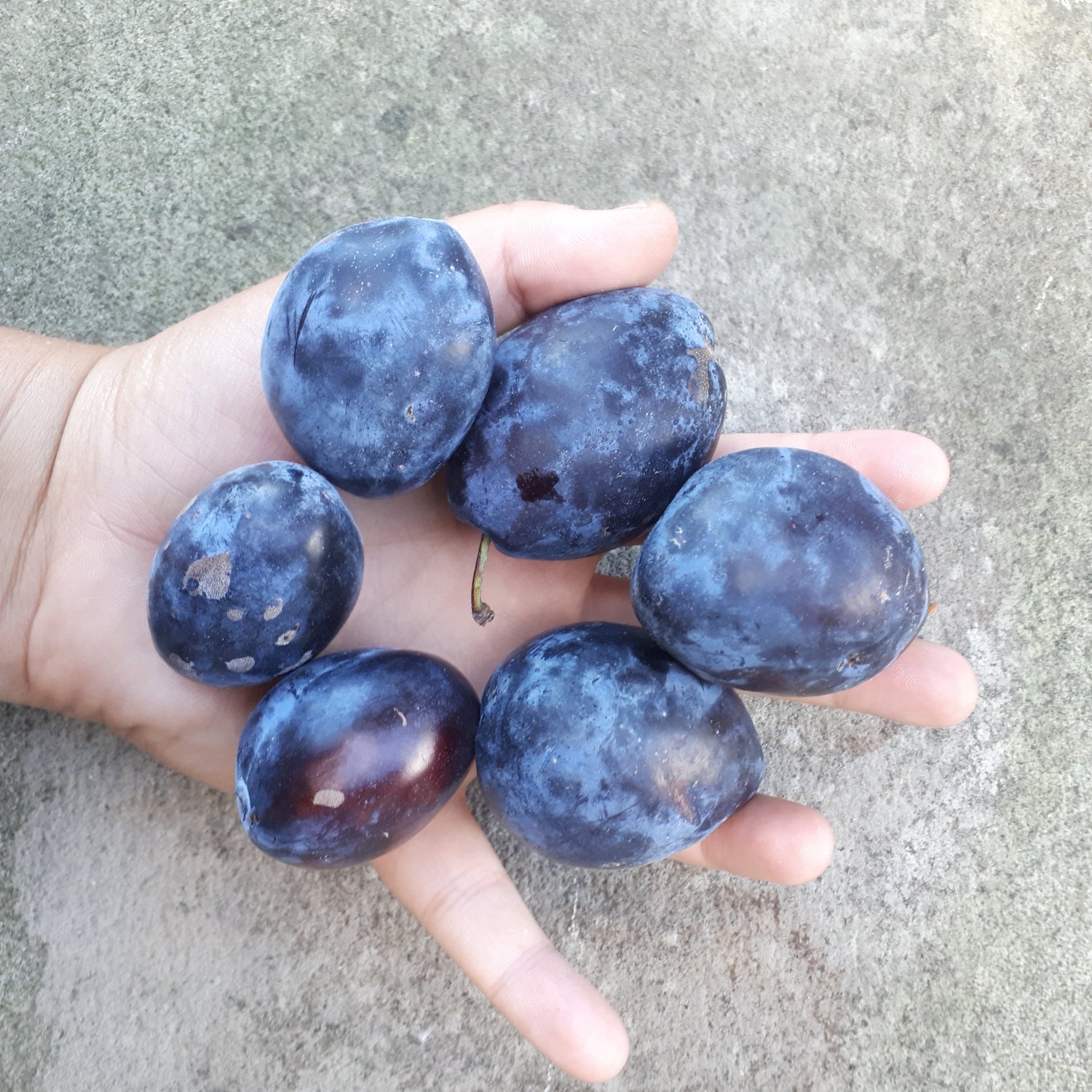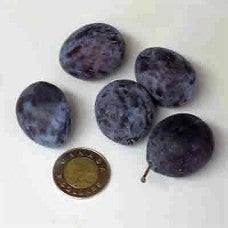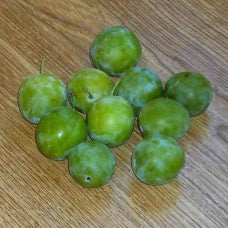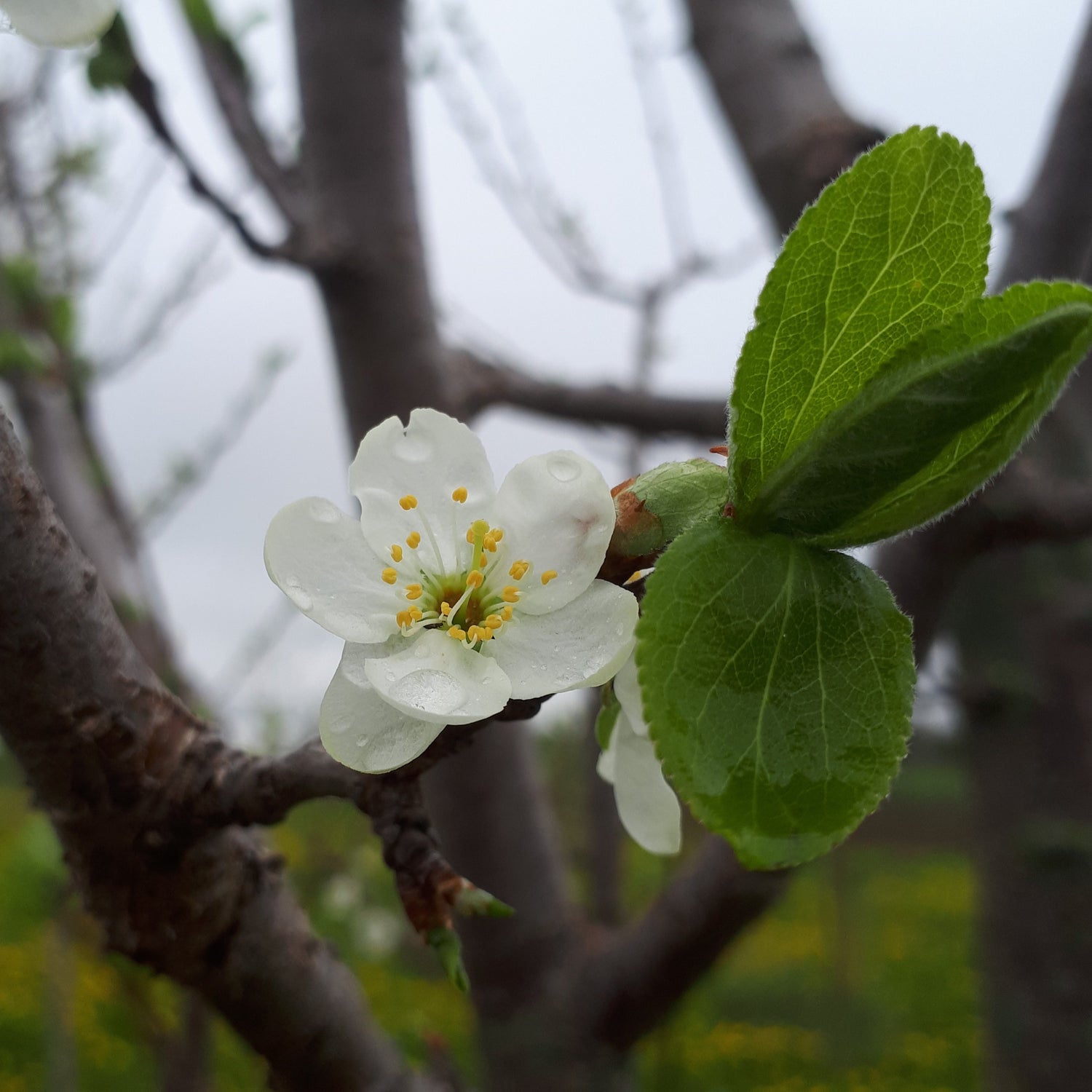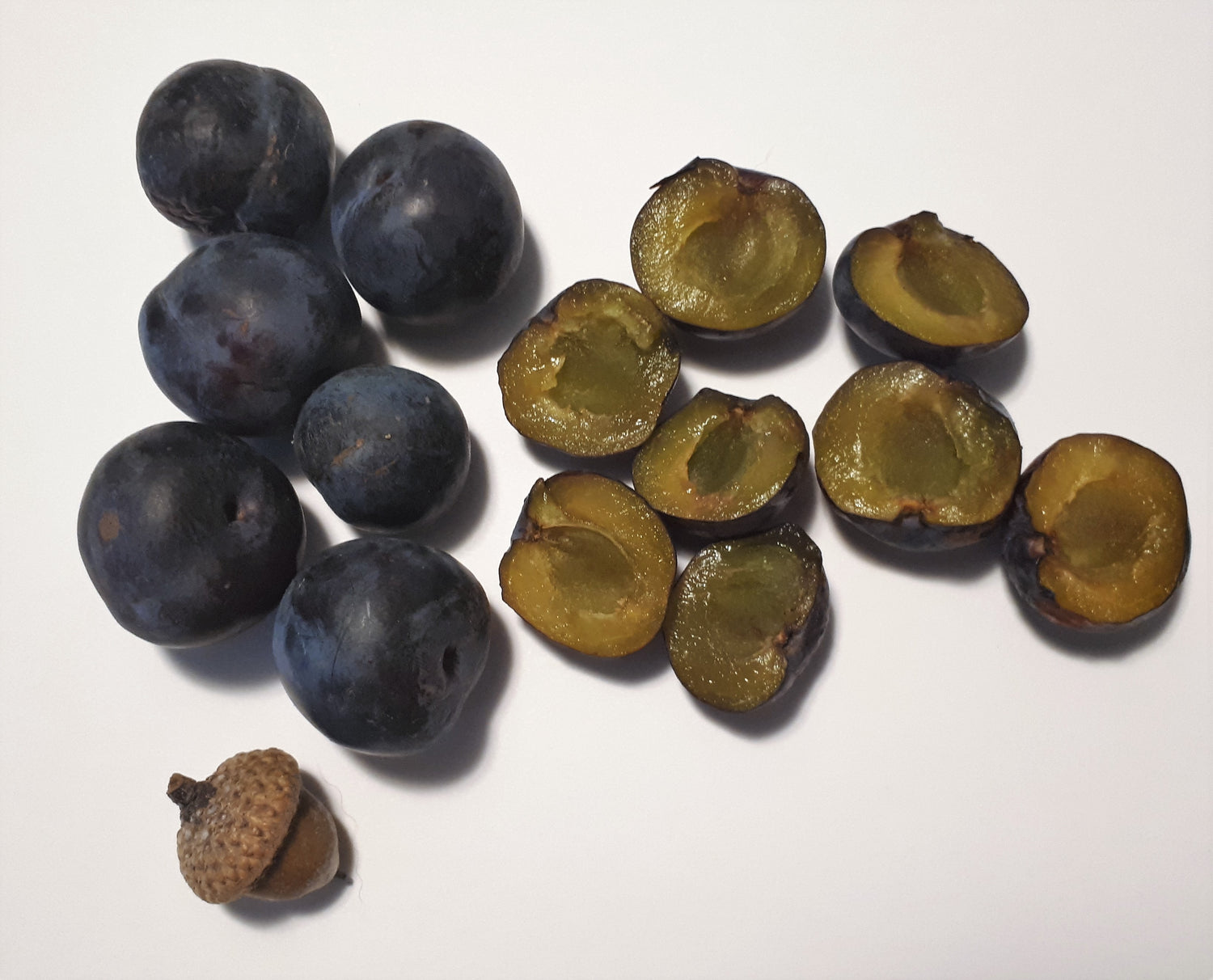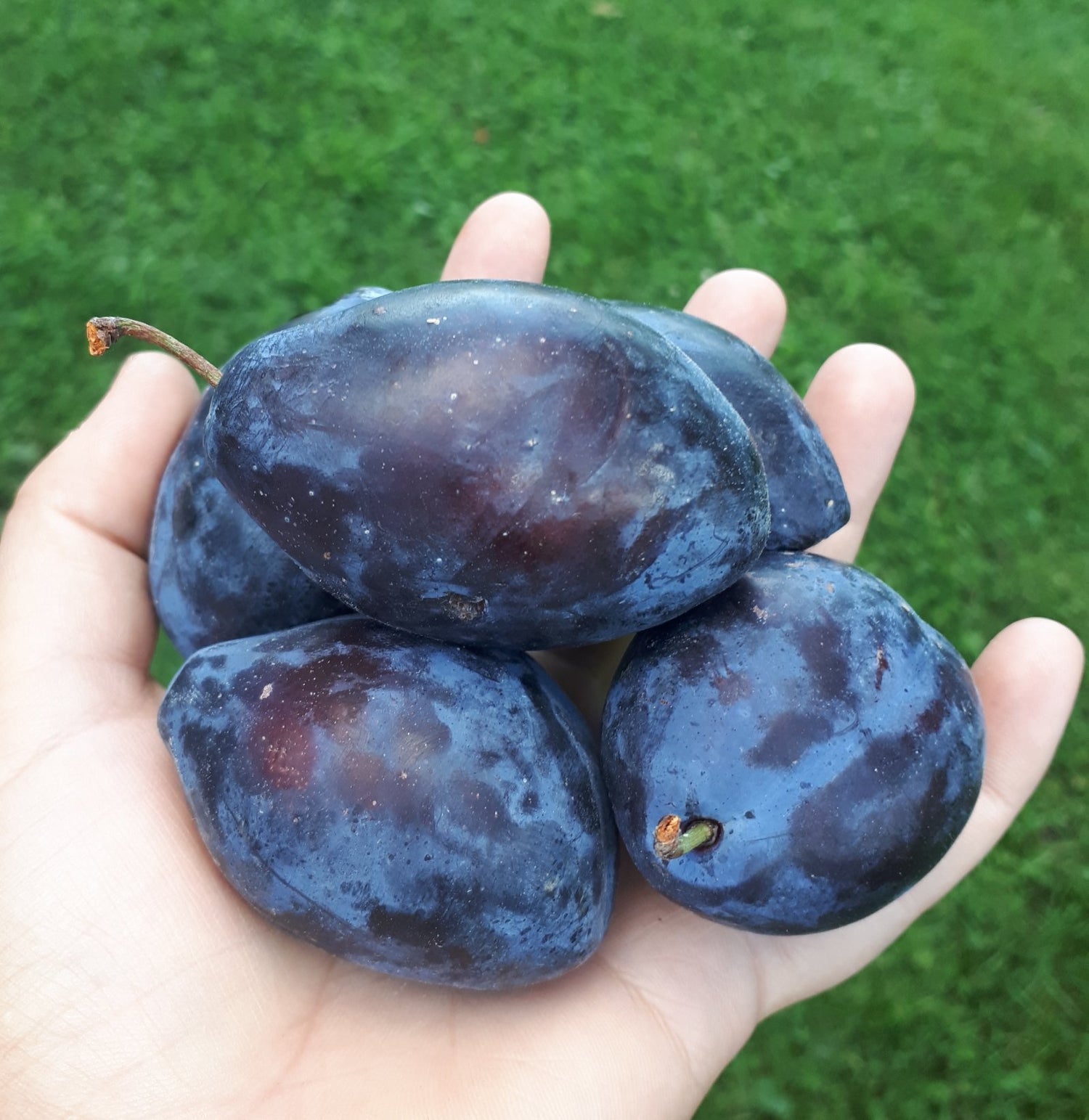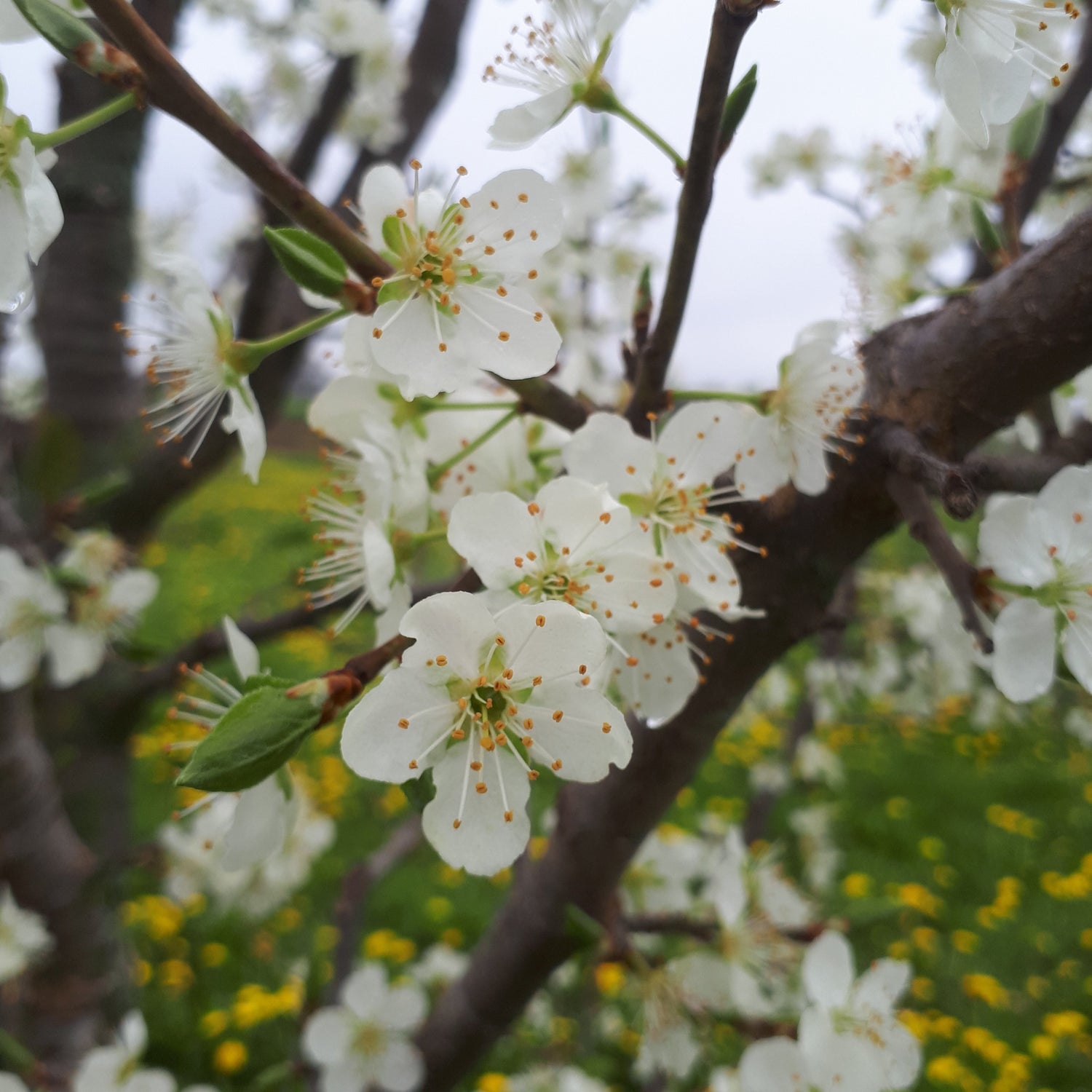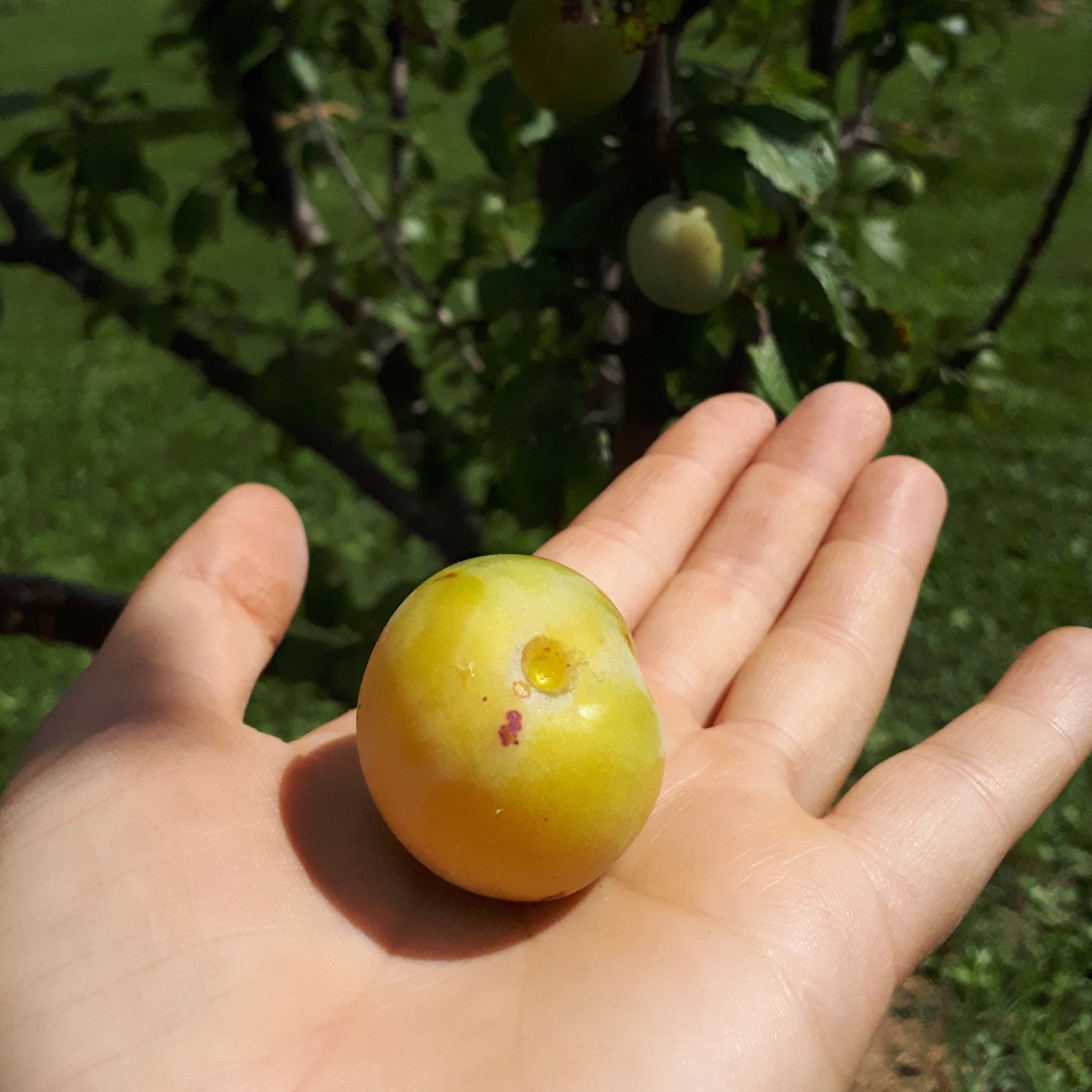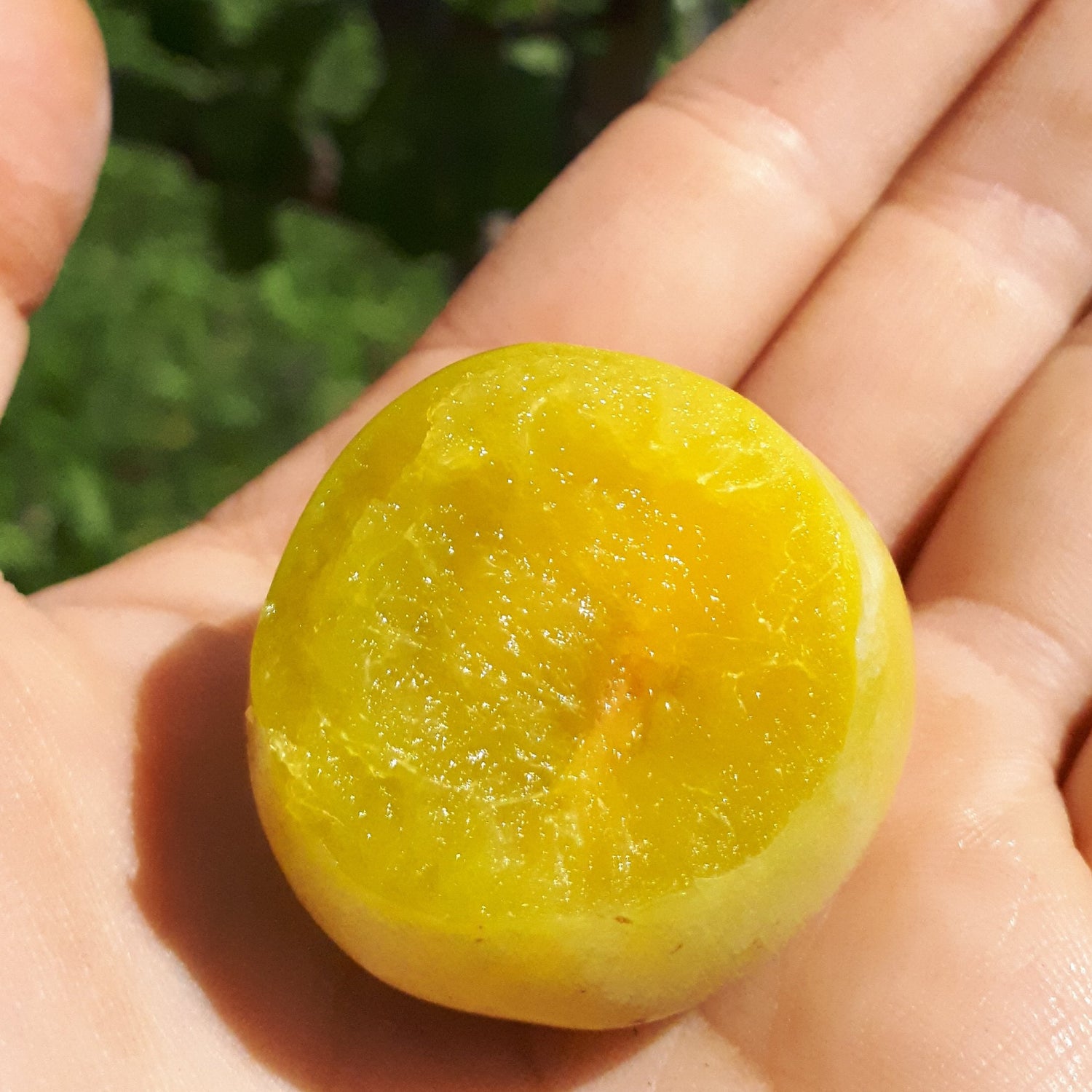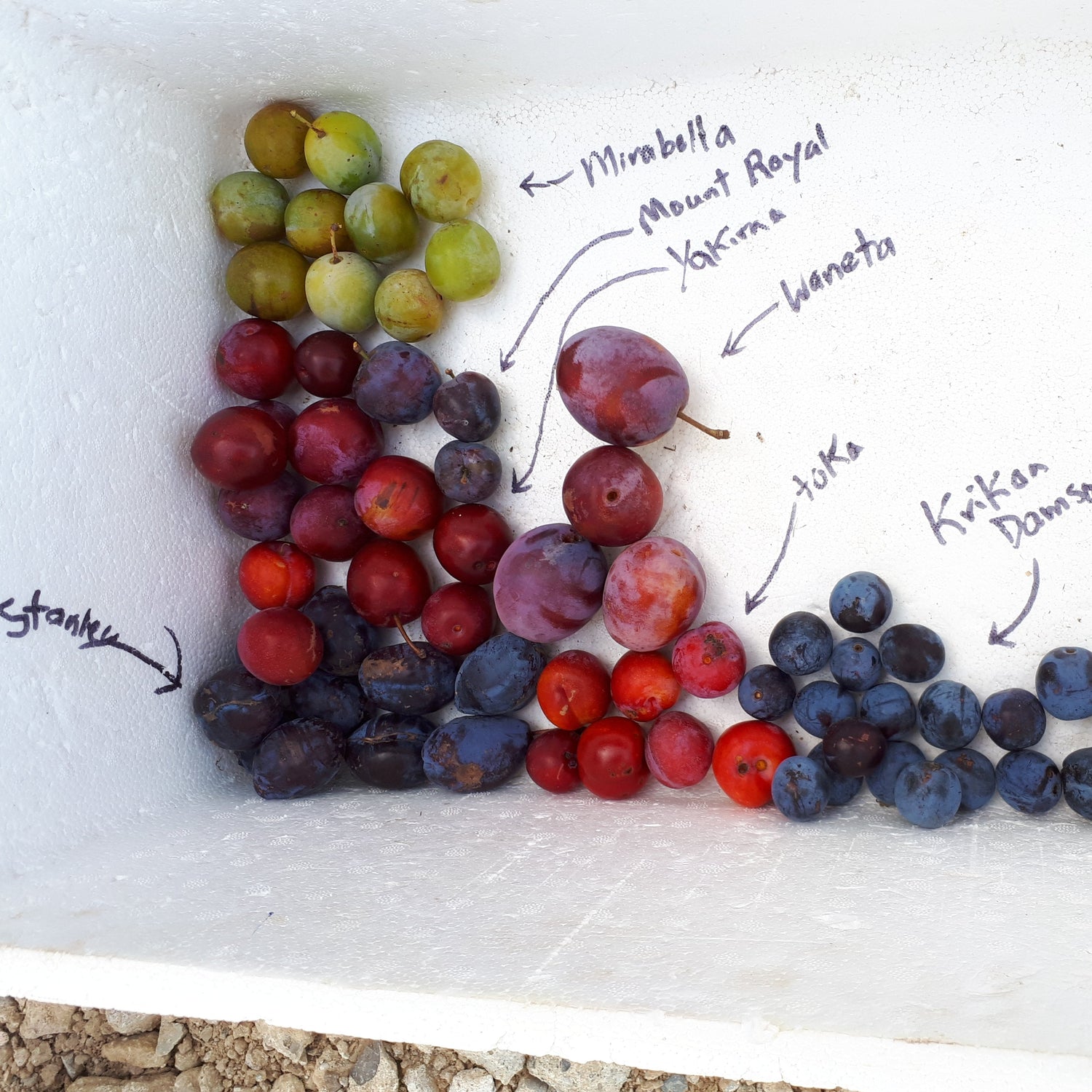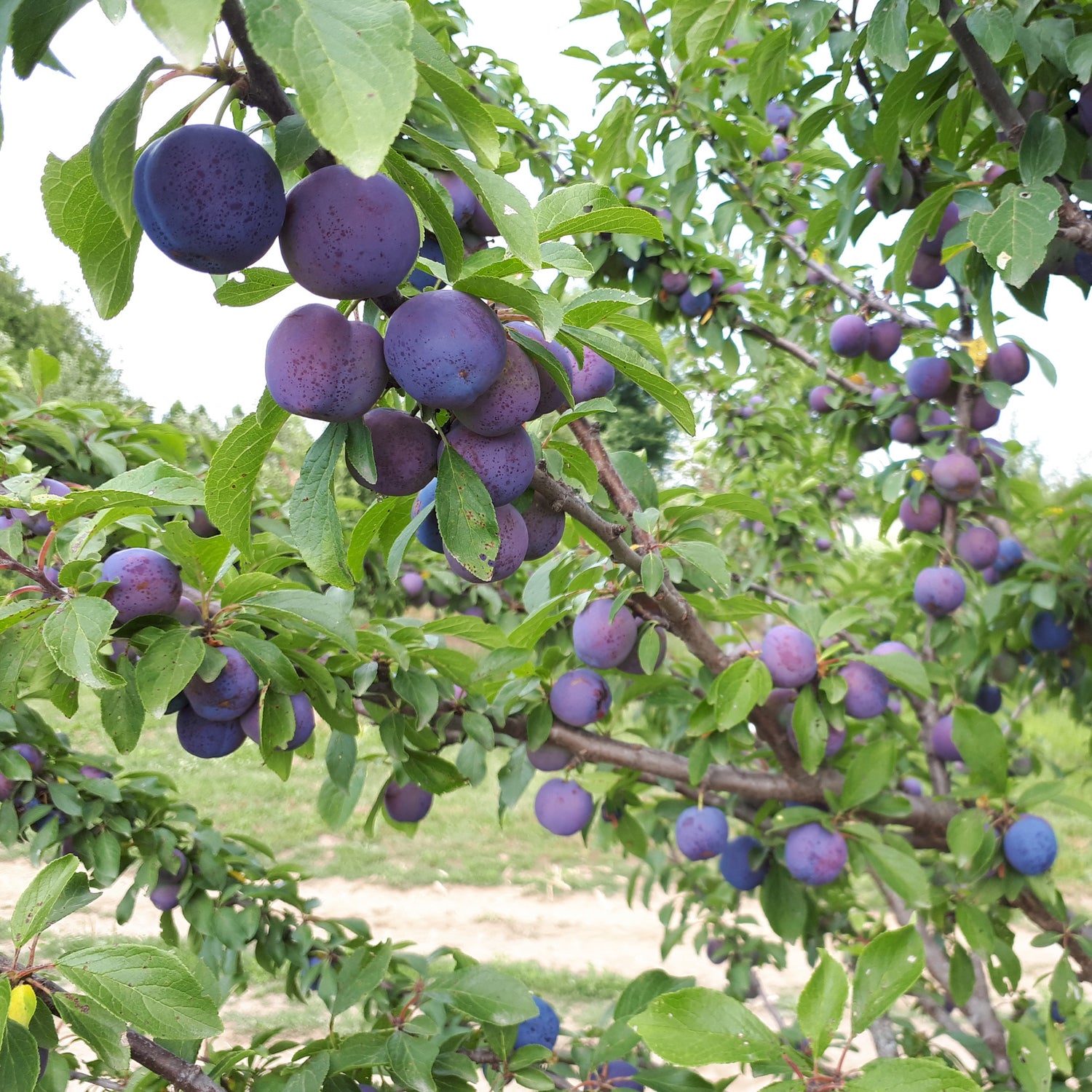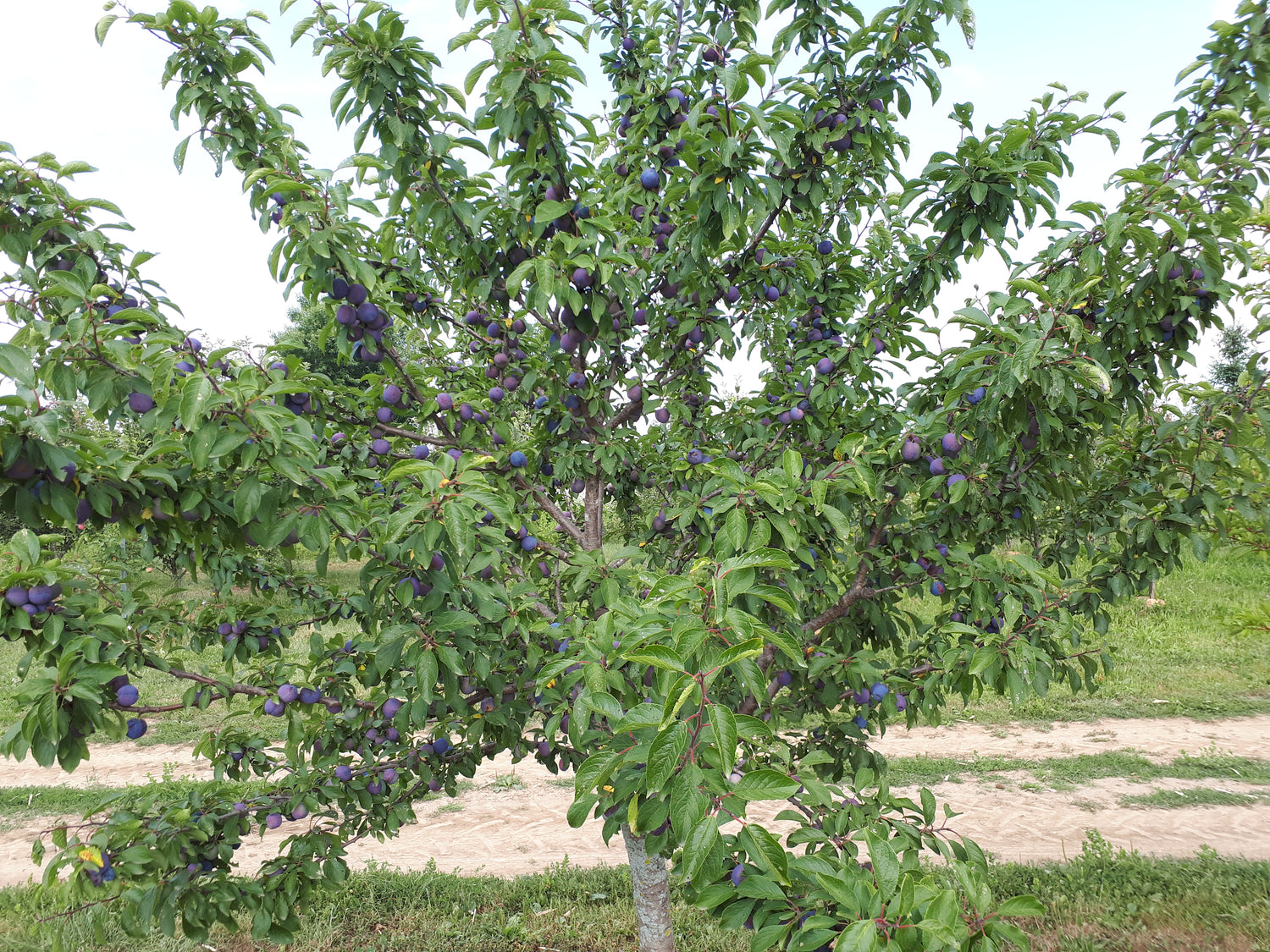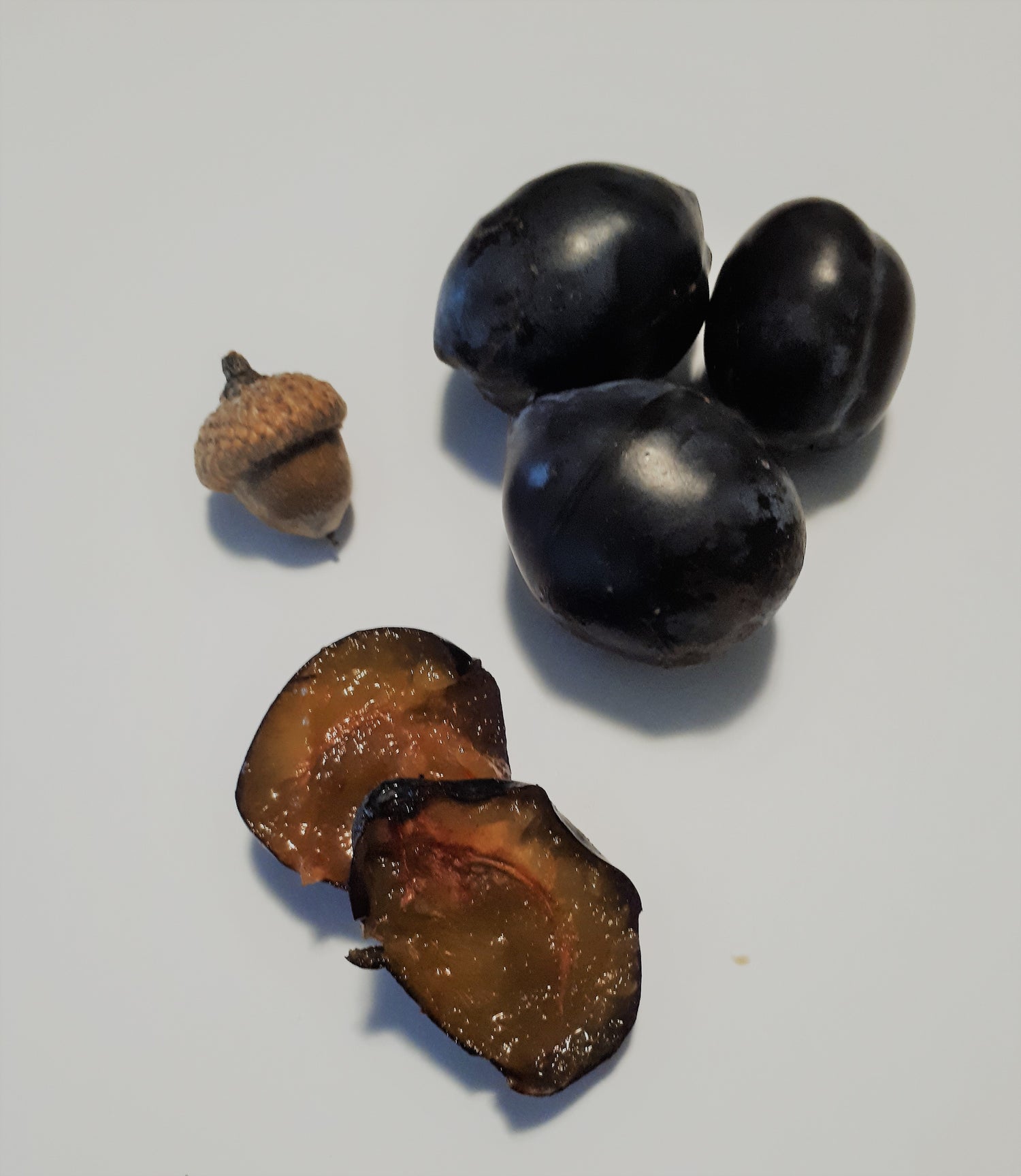European Plum Trees
Prunus domestica
European plums are a diverse group of fruits. Some are extremely sweet and are great for eating fresh while others shine when dried or used in baking. They are generally hardier than apricots and peaches, requiring a little less maintenance to get rewarding crops. Some European plums are self-pollinating and others require pollination partners of a different variety. Only European plums can pollinate other European plums.
Sort by:
18 products
18 products
History: Despite once being the most commonly planted commercial plum tree in New York, Bradshaw's origins are quite hazy. It is uncertain whether the variety even originated in Europe or the US. It was named in 1846 by C.M. Hovey who wrote about it in his "Magazine of Horticulture," naming the variety "Bradshaw" after an E.E. Bradshaw who had exhibited excellent specimens of the fruit for several years. Bradshaw has since been eclipsed by other plum varieties.
Why We Grow It: Bradshaw produces relatively large purplish-red plums of good quality. The flavour is pleasantly sweet and the variety is good for fresh eating and likely cooking and processing like other European plums. It is semi-clingstone. The tree is self-fertile, productive, and quite hardy, although it can be slow to start bearing fruit.
History: This European plum has contentious origins, making it difficult to determine if it is very old or extremely old. The name 'damson' stems from the Latin 'damascenum' meaning 'plum of Damascus.' As the name implies, some believe this plum may have come from the ancient city of Damascus and was brought to England by the Romans, making this plum thousands of years old. While this theory has been highly contested, there is ample evidence to prove that Damson plums have been grown in England for hundreds of years. It was introduced to the US in 1800 and was a a favourite due to its adaptability to its new home.
Why We Grow It: Damson produces small round clingstone fruit with a deep blue/purple skin and spicy yellow flesh. They are sweet enough to eat but also have some astringency which makes them less palatable than other varieties. However, they are superb for cooking, preserving, and making jam. The tree blooms late which allows it to avoid early frosts and this variety is self-fertile.
History: German plums are a European variety characteristic of the kind grown in central Europe. Although not much is known about its history, it is believed this variety is at least a couple centuries old.
Why We Grow It: A juicy, freestone plum with an aromatic, sweet flavour. They are great for fresh eating and due to their drier than average nature, are great for baking into traditional German plum desserts. They keep for 2-4 weeks refrigerated, providing ample time to enjoy them fresh or find that perfect recipe.
The photo of the plums in hand compares 4 larger Italian plums on the upper right, to 2 smaller German plums on the lower left.
History: Greengage plums are a European variety that originated in Iran, although it is unclear exactly how old they are. They were introduced to England via France in 1724 by Sir William Gage, after whom they were named in English when the French labels were supposedly lost in transit. These sweet plums were later brought to North American colonies where they were grown by prominent figures such as George Washington and Thomas Jefferson. Although they have since fallen out of favour in North America, they are still quite popular in western Europe and occasionally referenced in pop culture. Greengage plums are the namesake of The Greengage Summer, a 1958 novel and subsequent 1961 film, and are mentioned in a Monty Python sketch.
Why We Grow It: It is a shame this plum's popularity declined in North America since it is considered a high-quality dessert fruit, possibly even the best dessert plum. Their bright green flesh is incredibly sweet and can also be used for cooking and preserving. Greengage plum trees tend to have a compact growth habit, great for anyone without a lot of space.
History: Little is known about this particular variety aside from that it's a Damson plum that originated in Sweden. 'Krikon' is the Swedish word for 'damson.'
Why We Grow It: Although its history is a bit of a mystery, we can certainly tell you that this is the best plum variety for very cold regions. It produces small round deep purple fruit that are good for cooking, preserving, and making jam. The flesh has a spicy, sweet flavour although some do not find it that great for fresh eating. Compared to regular Damson's Krikon Damson is a bit smaller, and more flavourful.
History: Late Italian plums originated in the coastal Mediterranean areas of Italy, although little is known about their history aside from that. They are still grown in Europe and North America today.
Why We Grow It: This European variety produces a large-sized blue plum with sweet yellow flesh. It is an all-purpose plum that is excellent for drying and great eaten fresh, canned, or incorporated into baking, desserts, or salads.
History: Likely cultivated from a wild plum growing in Asia, Mirabelle plums are a specialty of the Lorraine region in France where they are still primarily grown today. They are very popular in Europe and the French city of Metz has an annual Mirabelle Festival that spans two weeks. In 2006, the French city of Nancy created the world's longest Mirabelle tart which measured over 200m in length.
Why We Grow It: It's no why wonder that this European plum is so popular. Mirabelle plums are super sweet and flavourful with soft juicy flesh. The medium-sized yellow fruit is exquisite as a dessert plum, but can also be used in jams, chutneys and schnapps.
History: The origins and history of this variety are unknown based on our current research.
Why We Grow It: This variety produces a medium-sized freestone plum with purple-pink skin and yellow flesh that is sweet and juicy. It is one of the hardiest European plums around, making it a good choice for our colder climate!
History: As the name suggests, Mount Royal plums originated in the Montreal area where it was either found by French colonizers as a wild chance seedling or intentionally bred by Jesuit missionaries and French colonizers using plums brought over from Europe. Either way, the result is a lovely plum hardy enough to survive Canadian winters.
Why We Grow It: This European plum is a Canadian classic of excellent flavour and good cold-hardiness. The fruit is blue-skinned with jammy yellow flesh that is both sweet and spicy. The tree produces heavy crops.
History: Stanley plum was developed in Geneva, New York by Cornell University and released in 1962.
Why We Grow It: This freestone European plum has deep purple skin and meaty, golden flesh, the standard for prunes. It has a sweet juicy flavour and is great for fresh eating, canning, and drying. The tree produces heavy, reliable crops.
Showing 10/18
